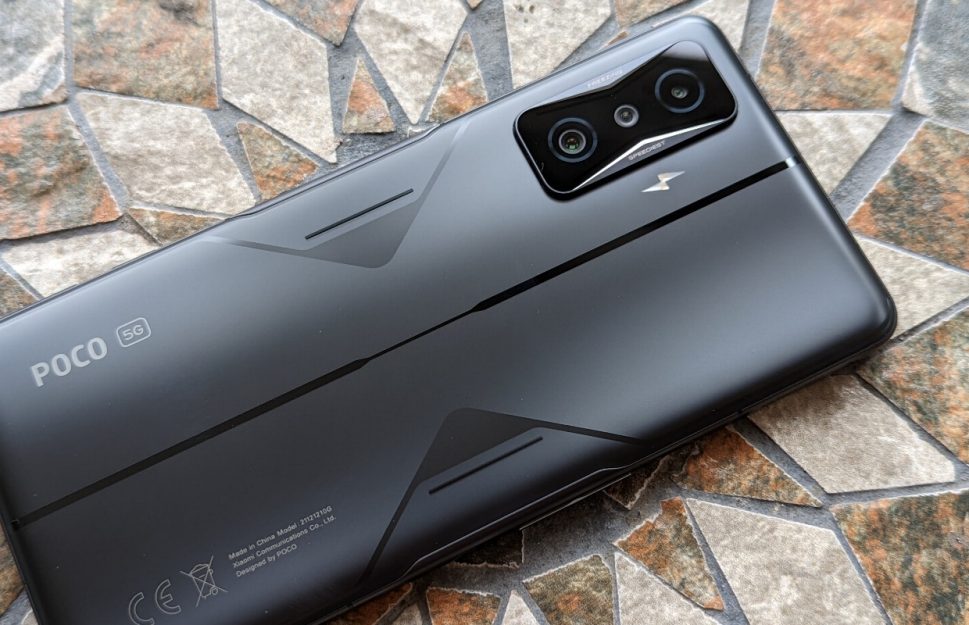POCO F4 GT, analysis: the POCO missile to shoot at the highest range
POCO wants to go all out this 2022, and the POCO F4 GT is its major declaration of intent. This is the company’s first ‘gaming’ mobile, the international version of the Xiaomi Redmi K50 Gaming Edition. Thus, it forgets part of the essence of the previous POCOs of the F series, which opted for low prices and specifications that were close to the first line.
The bet with this model is to compete for face-to-face with the segment’s greats, such as Nubia with its RedMagic 7, Lenovo with its Legion Phone Duel 2, or the BlackShark 5 family. The POCO F4 GT is a niche mobile, but it can make a lot of sense if we want the best hardware for less than 600 euros. We analyze the latest from POCO, a mobile that continues to compete among the best in quality-price, although moving away from low figures.
Design: Lots of lines, LEDs, and “gamer stuff.”
A mobile for gamers without a strident design has not yet been born. Despite this, contextualizing with its main rivals, the POCO F4 GT is relatively discreet (except for curious details such as the LEDs on its camera module). Its back is finished in glass with aluminum bezels. Thus, it gets on the bandwagon of premium materials, the first POCO with this treatment in its design.
The camera module is not too big, and it has the peculiarity that it functions as notification LEDs. It is pretty practical to have the mobile on a table upside down. Regarding the lightning-shaped flash, everyone who draws their conclusions (it reminds me more of Harry Potter than something “gaming”).
The main negative point of the back is that it catches fingerprints with fantastic ease. Put your finger on the glass so that the fingerprint is imprinted instantly. This, in mobile that we are going to use a lot without a case, is somewhat annoying. Except for this aspect, the rest of the design elements are outstanding.
In a gaming mobile, the button panel takes on a special meaning. The main buttons are the two magnetic triggers that this device has. A manual tab activates them, the press is very pleasant, and POCO promises that we can give them the use of more than a million presses. They are silent, robust, and of excellent quality.
When the triggers are hidden, they are protected inside the terminal; they stand out like any other button when we activate them. It’s not annoying to always leave them out, something that makes sense considering that, as we’ll explain later, we can configure the triggers as additional buttons on the phone (to open the camera, flashlight, etc.).
The compaction exercise is a large mobile but not excessively. It is smaller and lighter than a Samsung Galaxy S22 Ultra, and its measurements and weight are practically identical to that of ‘standard’ mobile phones, such as the Motorola Edge 30 Pro. The shrillness and extra buttons of the design do not penalize the final dimensions, which is good news.
In short, POCO finally has a mobile with a premium finish, although this edition has a gaming design. The leap in materials has suited it well, it is not excessively large, and it is ergonomic enough to enjoy long hours of play without our hands getting tired.
The POCO F4 GT panel is 6.67 inches, with AMOLED technology and a 120Hz refresh rate. Despite being similar to last year’s data, the jump in quality compared to the POCO F3 panel is noticeable. We no longer have a rainbow effect when we tilt it; the brightness in average values is much higher (at the non-maximum peak, we have not noticed a difference), and, in general, it is noticeable that it is a panel with more life than the one seen last year.
Poco F4 Gt Screen
It is compatible with HDR10 +, is covered by Gorilla Glass Victus, and has a color depth of 10 bits. Despite these outstanding technical data, colorimetry oversaturates quite a bit. Even in natural color mode, the colors are more vivid than we would like. Movement may make sense to enhance the color in games, but we have to spend a few minutes manually calibrating the panel if we want it to be true to life.
Fortunately, MIUI gives us multiple options to customize and calibrate the panel. We can perform a DCI-P3 or sRGB calibration within the advanced settings, adjusting the tones, saturation, contrast, and other panel values. It also has interesting automatic functions, such as adaptive colors (the color is changed to the ambient light) or the reading mode, which reduces the amount of blue light emitted by the screen.
The POCO F4 GT moves at 60 or 120 Hz, and there is no adaptive refresh of any kind as there is no LTPO type panel.
We miss most on this screen the adaptive refresh rate, a lack that is difficult to justify in a terminal of this price. The panel constantly runs at 120Hz, with no intermediate values when we stop touching the screen. This, as we will see later, will affect the life of the battery.
The system has an option to adjust between 60 and 120Hz, without intermediate values, as it deems. Our tests have remained at 120Hz even with the panel displaying static content.
Biometrics
The POCO F4 GT has a side fingerprint reader and facial recognition at the biometric level. The fingerprint reader is simply impeccable, working instantly and with little room for error. It is a perfect position for right-handers since its function is just where the thumb rests when gripping the device.
Facial recognition is also fast and accurate, although not very secure as it is based on 2D recognition through the camera. Be that as it may, it is an excellent complement to the fingerprint reader.


